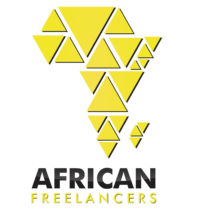Pricing is one of the most challenging aspects of freelancing. Set your rates too high, and you may struggle to attract clients. Set them too low, and you risk overworking yourself for minimal returns. Many freelancers, especially those just starting, struggle to strike the right balance between competitiveness and profitability. A single pricing mistake can have serious consequences. Charging too little can lead to financial instability and burnout, while inconsistent or unclear pricing can make it harder to build long-term client relationships. Without a well-thought-out pricing strategy, freelancers may find themselves stuck in a cycle of low-paying projects that don’t reflect the value of their skills and expertise.
The good news? These mistakes are avoidable. In this article, we’ll explore five of the most common pricing mistakes freelancers make and practical strategies to prevent them. By the end, you’ll have a clearer understanding of how to set fair and profitable rates that align with your expertise and business goals.
Pricing Mistake 1: Undervaluing Your Services
One of the most common pricing mistakes freelancers make is undervaluing their work. Many freelancers, especially those just starting, set their rates too low because they lack confidence in their skills, fear losing potential clients, or simply don’t know what others in their industry are charging. While this approach might seem like a good way to attract clients quickly, it often leads to overwork, financial stress, and difficulty raising rates in the future.
Freelancers who undervalue their services often find themselves taking on multiple low-paying projects just to make ends meet. This can quickly lead to burnout, leaving little time to focus on skill development or higher-value opportunities. Additionally, setting low prices can create a perception that your work is of lower quality, making it harder to attract high-paying clients. Once clients get used to paying a lower rate, it becomes challenging to raise your prices without losing them.
How To Avoid: It’s essential to research industry rates and understand what other freelancers with similar experience and expertise are charging. Looking at freelance job boards, networking with other professionals, and using rate calculators can help you determine a fair price for your work. Instead of setting rates based on fear, calculate your ideal hourly or project-based rate by considering your expenses, experience, and the value you provide to clients. Most importantly, learn to communicate your value with confidence. Clients are often willing to pay more if they see the impact of your work on their business.
Pricing Mistake 2: Not Factoring in Business Expenses
Another mistake freelancers make when setting their rates is failing to account for business expenses. Many focus solely on the time they spend on a project without considering the additional costs of running a freelance business. Ignoring these expenses can lead to shrinking profit margins, financial instability, and, ultimately, an unsustainable business.

A common reason freelancers overlook expenses is that they equate pricing with personal income. They calculate their rates based on what they need to survive rather than what’s required to sustain and grow their business. However, running a freelance business has hidden costs: software subscriptions, marketing expenses, website hosting, professional development, and even healthcare or retirement savings. Taxes are another major factor—freelancers are responsible for paying their income tax and, in some cases, self-employment tax, which can significantly impact earnings.
How To Avoid: Freelancers should calculate their rates in a way that accounts for both their income needs and business expenses. A simple way to do this is to list all recurring and one-time business costs, and then factor them into pricing decisions. For example, if a freelancer spends $500 per month on essential tools and taxes, they need to ensure that their rates generate enough income to cover these expenses while still allowing for profit.
Pricing Mistake 3: Charging by the Hour Instead of Value-Based Pricing
Many freelancers default to charging by the hour because it seems like the most straightforward pricing method. It’s easy to track time spent on a project, multiply it by an hourly rate, and bill accordingly. However, while hourly pricing may seem logical, it often limits a freelancer’s income potential and fails to reflect the true value of their work.
One major issue with hourly pricing is that it penalizes efficiency. As freelancers gain experience, they naturally become faster and more skilled at completing tasks. However, if they continue to charge by the hour, their earnings decrease as their efficiency increases. For example, a seasoned graphic designer might take 30 minutes to create a high-quality logo that brings significant value to a client’s brand. If they charge only for those 30 minutes, they’re undervaluing years of experience that enabled them to work quickly and effectively. In contrast, a less experienced designer might take five hours to produce a lower-quality logo but earn more simply because they took longer.
Another downside to hourly pricing is that it focuses on time spent rather than results delivered. Clients don’t hire freelancers just for their time; they hire them for solutions. A well-written sales page, a strong marketing strategy, or an engaging website design has value beyond the number of hours put into it.
How To Avoid: Freelancers should shift to project-based or value-based pricing. Project-based pricing involves setting a fixed rate for a specific deliverable, ensuring that the freelancer is compensated for their expertise rather than just their time. Value-based pricing takes this a step further by pricing services based on the results they generate for the client. For example, if a freelancer’s SEO strategy can help a business increase traffic and revenue, they can charge based on the potential return on investment rather than just the hours spent optimizing content.
Mistake 4: Lack of Clear Payment Terms
Late or missing payments are problems with many African freelancers. Unfortunately, many freelancers make the mistake of assuming that clients will pay on time without a formal agreement in place. They start working on a project based on a verbal promise or a casual email exchange, only to find themselves chasing payments after the work is done. This lack of clear payment terms not only causes financial instability but also leads to issues like scope creep—where clients request additional work beyond what was initially agreed upon without extra compensation.
Without a structured payment system, freelancers are left vulnerable to delayed or unpaid invoices. Some clients, whether intentionally or due to mismanagement, may drag their feet when it comes to settling payments. Others might dispute charges or ask for endless revisions without additional pay, eating into the freelancer’s time and earnings.
How To Avoid: Freelancers should always use contracts that outline clear payment terms before starting any project. Additionally, freelancers can protect themselves further by implementing milestone-based billing, where payments are made at different stages of the project rather than at the end. This ensures steady cash flow and minimizes the risk of working without pay. Online payment platforms like PayPal, Stripe, or escrow services can also help by providing secure payment options that require clients to commit financially before work begins.
Pricing Mistake 5: Inconsistent Pricing Across Clients
Many freelancers make the mistake of charging different rates for different clients without a clear pricing structure. This often happens because they fear losing potential clients and, as a result, adjust their prices on a case-by-case basis. They may lower their rates for certain clients who claim to have a limited budget, charge more when they feel a client can afford it, or negotiate pricing differently for every project without a standardized approach. While this might seem like a flexible way to attract work, it ultimately creates instability and makes it difficult to scale a freelance business.

Without a clear rate structure, freelancers may find themselves working for drastically different pay rates on similar projects, leading to unpredictable income. This lack of consistency also makes it harder to justify price increases. Clients who are used to paying a lower rate may resist when a freelancer suddenly raises their prices, leading to awkward conversations or even lost business. Additionally, when freelancers adjust their pricing based on negotiation rather than value, they risk undervaluing their work and struggling to maintain profitability.
How To Avoid: Freelancers should establish a standardized pricing system. This doesn’t mean every project must have the same price, but there should be a clear framework that determines rates based on factors like project complexity, experience level, and industry standards. Creating a rate sheet with base prices for different services can help ensure consistency.
End Note
Pricing mistakes are common among freelancers, but they don’t have to define your career. Setting the right prices isn’t just about earning more; it’s about valuing your skills, maintaining financial security, and creating a sustainable business model.
Have you made any of these pricing mistakes before? How did you handle them? Share your experiences in the comments below!
For more tips and insights on freelancing, check out other articles on AfricanFreelancers.com. Join our growing community of freelancers to exchange ideas, gain new skills, and navigate the freelance world with confidence. Your journey to better pricing and a thriving freelance business starts here!





